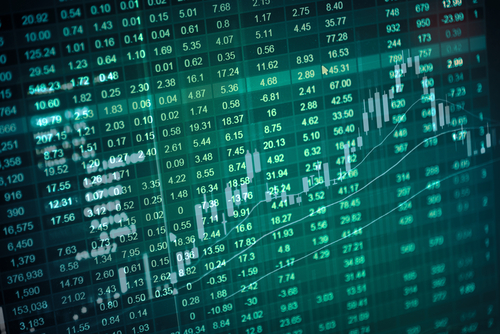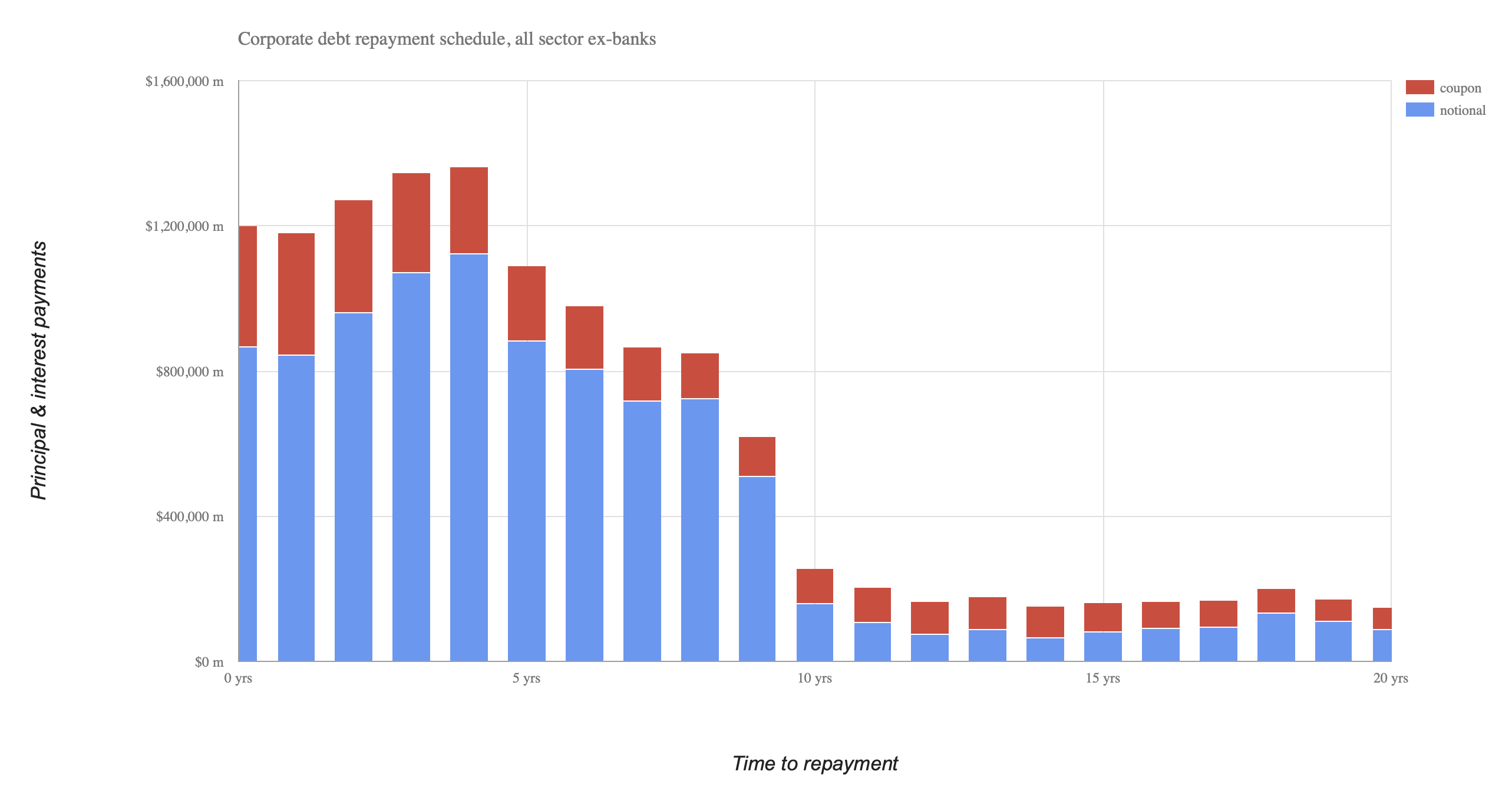Inflation and the corporate debt hangover

After the binge comes the hangover. Non-bank companies increased their debt by a net amount of $1.2 trillion between the start of the pandemic in March 2020 and the end of February 2022.
After the binge comes the hangover. Non-bank companies increased their debt by a net amount of $1.2 trillion between the start of the pandemic in March 2020 and the end of February 2022, according to a Risky Finance analysis based on Markit iBoxx data. With central banks backstopping the corporate bond market, much of this borrowing was used to reward shareholders via dividends, share buybacks or M&A deals.
During the coming year, these companies will have to pay out roughly the same amount – $1.2 trillion – either in bond principal repayments or interest during the coming year. Principal might be funded with new borrowing, but interest payments will have to come out of earnings.
A few months ago, earnings growth might have been expected to cover any interest coming due for most companies, but that was before Russia’s invasion of Ukraine sent commodity prices skyrocketing. Meanwhile, with central banks now actively raising interest rates to combat inflation, any company that refinances their debt in the next year is going to have to pay higher interest coupons for the privilege.
We can get an idea of the burden using the interest cover – the ratio of earnings before tax versus the total corporate bond interest payments due in the next year. Taking all the issuers in aggregate, with a total of $14 trillion in outstanding corporate debt, this ratio is around six. This sounds reassuring, with plenty of room for earnings to decline or refinancing costs to rise without much risk to bondholders.

However, this aggregate ratio is flattered by the healthy performance of tech giants and disguises the extent of leverage seen in particular sectors. Consider travel & leisure for example, for which the interest cover is just 0.2. This means that last year’s earnings would on average cover 20% or around two months of 2022’s interest coupon payments.
One might argue that 2022 forecast earnings should be used as the numerator in this ratio. But forecasts are uncertain for airlines, cruise line companies, hotel chains and car rental firms that even before the pandemic were overleveraged and under fierce competitive pressure. Covid-19 lockdowns blindsided them further, although at least airlines received government bailouts.
Today, the sector that hoped to cruise back to profit on the wave of post-pandemic consumer spending faces a perfect inflationary storm: a large part of its cost base is linked to oil prices, where hedging is only a stopgap solution. The consumers who might flock to go on holiday are now discovering that their disposable income is being swallowed by increased fuel or utility bills. Meanwhile government support is gone and high yield issuers are facing particularly sharp rises in borrowing costs.
We can already see signs of this in the market, as Federal Reserve chairman Jerome Powell warns of increasingly aggressive rate hikes. Dollar corporate bonds have seen their average yields increase by almost 50 basis points since the end of February. If corporate yields doubled – as they briefly did at the height of the pandemic in March 2020 – then interest cover would halve if rates stayed high.
Treasurers have already been preparing for this possibility, using the past two years of record low borrowing costs to refinance and extend maturities where they could. From $1.2 trillion in 2022, interest payments and bond redemptions rise steadily to a peak of $1.4 trillion in 2026, according to Markit iBoxx data. That might provide a sufficient window for the Ukraine crisis and the squeeze in commodity prices to be resolved. But for some companies, it won’t be enough.